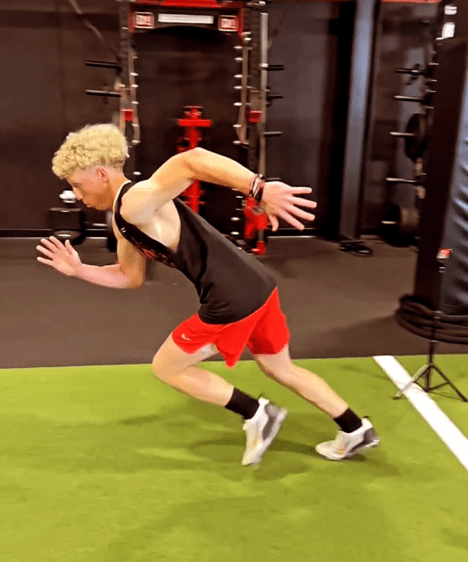
In the realm of high-performance athletics, speed is often the differentiating factor between victory and defeat. Whether it's sprinting down the track, dashing past defenders on the field, or driving to the basket, the ability to accelerate quickly can make all the difference. When working with high performance athletes there is the assumption these athletes have little to no need to develop or improve form. Their need to improve their speed will be due to the need to increase strength, power expression or coordination and reaction qualities. Leveraging the latest advancements in technology and discoveries, coaches are able to improve the individual athlete’s areas of improvement.
Identifying Areas for Improvement: The 10/20 Model
Understanding that every athlete is unique, with specific areas for improvement, is fundamental to effective training. One approach gaining traction in the world of sports performance is the 10/20 model developed by renowned strength and conditioning coach Cal Dietz. This model breaks down an athlete's acceleration phase into three distinct segments: 0-5 yards, 5-10 yards, and 10-20 yards.
By employing the 10/20 model, coaches can precisely pinpoint an athlete's strengths and weaknesses during the crucial acceleration phase. Whether an athlete excels in the initial burst off the line or struggles to maintain speed over longer distances, targeted training interventions can be tailored to address specific needs, maximizing the efficiency of the training regimen.
How does this translate to our experience at D1? We have many parents come into the facility looking for one specific area of improvement, such as agility, ball handling, or strength. Once we conduct an assessment we often discover the athlete needs improvement in starting speed, change of direction and overall strength (or sometimes muscular endurance). Our coaches then recommend the best course of action over the next couple of months. For example, if a parent believes their child is “the fastest on the soccer field”, but we identify the need for starting speed and change of direction we may recommend training that can produce immediate results and a program that will develop the athlete over a period of time. The prescribed program may not be what the parents believed the athlete initially needed when they walk through D1 doors. It is our responsibility to conduct an assessment, make the recommendations, create the best most effective program possible and to train the athlete in an effective manner.
Harnessing Technology for Data-Driven Insights
To effectively enhance speed and acceleration, accurate measurement and analysis are paramount. This is where technology becomes an invaluable asset in the training arsenal. As highlighted in an insightful article from SimpliFaster, titled "How to Use Speed and Power Data to Train Fast Athletes," the integration of technology allows coaches to gather real-time data on key performance metrics.
By analyzing this data, coaches can gain actionable insights into an athlete's biomechanics, identifying areas for improvement and fine-tuning training protocols accordingly.
0-5 yards
If an athlete needs to improve the starting speed, or the first 0-5 yards it is likely this athlete needs to improve force production through and improve lower limb integrity including the foot and ankle. This phase can be improved by training proper mechanics, power production and increasing strength in the foot and ankle. Energy leaks are common this phase.
5-10 yards
If an athlete's primary area of deficit is during this phase, they are likely lacking transition abilities and may have kinematic deficits.
Improvement can be made through ballistic triple extension training and rate of force development enhancement.
10-20 yards
Speaking to field athletes, a deficit in this area could be due to lack of ability to efficiently react, transition between lower limbs and poor sprint mechanics.
How does this translate to the soccer example we provided? Although a parent may consider their athlete to be the fastest on the field on a particular team at a particular time, they may not be the best athlete they can possibly be, and they may not be the best athlete on the higher level team they would like to try out for, or be the fastest next season. When other athletes are training to improve their athletic abilities, your athlete must also train to become a better athlete or they risk being surpassed.
Personalized Training Protocols
Armed with data-driven insights, coaches at D1 Training Henderson can craft personalized training protocols tailored to each athlete's unique needs and goals. For athletes looking to enhance their initial burst of speed (0-5 yards), drills focusing on explosive starts and acceleration mechanics may take precedence.
Similarly, athletes aiming to improve their speed over longer distances (10-20 yards) may benefit from endurance-building exercises and technique refinement to maintain maximum velocity throughout the sprint. With technology-enabled precision, coaches can monitor progress, adjust training variables, and ensure that athletes are on track to achieve their speed and agility objectives. Remember sprint coaches are trained to identify areas for improvement and prescribe programs accordingly. Technology provides the potential to identify exactly where an athlete needs to improve in their sprint. At D1 Training Henderson, we help athletes in every sport develop into the best athlete they can be, and to train at higher levels.
